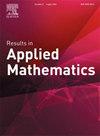LIF神经元对α函数型兴奋性电流脉冲尖峰响应的分析强度-持续时间曲线
IF 1.4
Q2 MATHEMATICS, APPLIED
引用次数: 0
摘要
神经元对兴奋性电流脉冲的刺激是否产生尖峰是由脉冲参数的强度-持续时间曲线(SDC)决定的。SDC是引起尖峰响应所需的最小脉冲幅度对脉冲持续时间或其衰减时间的依赖。兴奋性神经元通过兴奋性突触后电流脉冲影响其他神经元。对于这样一个脉冲的时间过程,一个简单而又合理的近似是alpha函数,开始时呈线性上升,结束时呈指数衰减。然而,迄今为止,这种情况的精确分析SDC还不知道,即使是对于漏的集成和点火(LIF)神经元,实践中使用的最简单的尖峰神经元模型。我们得到了LIF神经元的一般SDC方程。利用Lambert W函数——一种被广泛应用的特殊函数,我们找到了由α函数形式的兴奋性电流脉冲刺激的LIF神经元尖峰响应的精确解析SDC。为了统一比较结果,我们还推导了(i)矩形脉冲,(ii)上升斜坡脉冲和(iii)瞬时上升和指数衰减脉冲的解析SDCs。在无泄漏的极限下,我们证明了SDC在所有考虑的情况下都简化为经典双曲线。本文章由计算机程序翻译,如有差异,请以英文原文为准。
Analytical strength-duration curve for the spiking response of the LIF neuron to an alpha-function-shaped excitatory current pulse
Whether or not the neuron emits a spike in response to stimulation by an excitatory current pulse is determined by a strength-duration curve (SDC) for the pulse parameters. The SDC is a dependence of the minimal pulse amplitude required to elicit the spiking response on either the pulse duration or its decay time. Excitatory neurons affect the others through pulses of excitatory postsynaptic current. A simple yet plausible approximation for the time course of such a pulse is the alpha function, with linear rise at the start and exponential decay at the end. However, an exact analytical SDC for this case is hitherto not known, even for the leaky integrate-and-fire (LIF) neuron, the simplest spiking neuron model used in practice. We have obtained general SDC equations for the LIF neuron. Using the Lambert W function — a widely-implemented special function, we have found the exact analytical SDC for the spiking response of the LIF neuron stimulated by an excitatory current pulse in the form of the alpha function. To compare results in a unified way, we have also derived the analytical SDCs for (i) rectangular pulse, (ii) ascending ramp pulse, and (iii) instantly rising and exponentially decaying pulse. In the limit of no leakage, we show that the SDC is reduced to the classical hyperbola for all considered cases.
求助全文
通过发布文献求助,成功后即可免费获取论文全文。
去求助
来源期刊

Results in Applied Mathematics
Mathematics-Applied Mathematics
CiteScore
3.20
自引率
10.00%
发文量
50
审稿时长
23 days
 求助内容:
求助内容: 应助结果提醒方式:
应助结果提醒方式:


